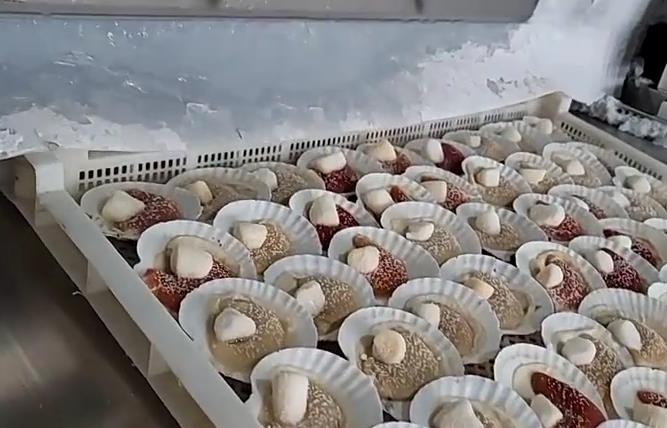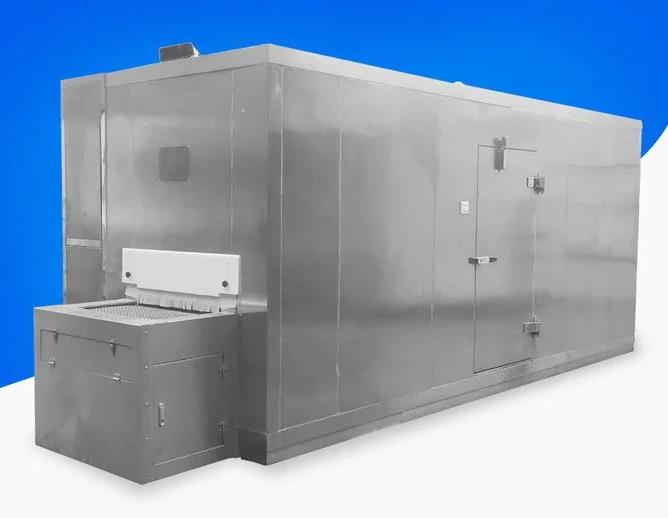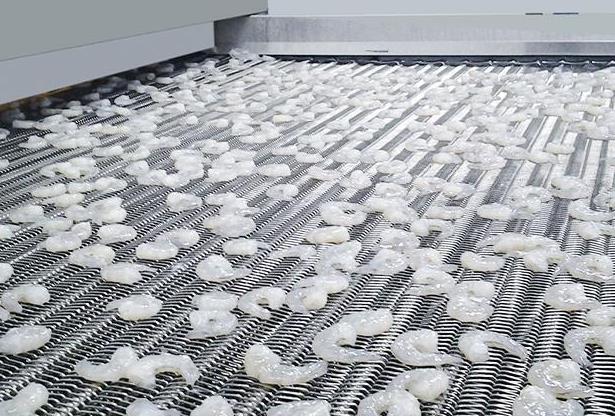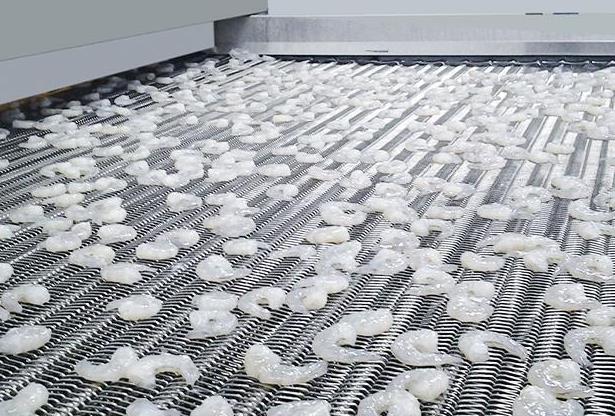With the rapid advancement of technology and the continuous improvement of people's living standards, the demand for higher-quality and better-tasting food is on the rise. Quick freezing, as an innovative food processing method, has become a key technology in modern food production. Among the various types of freezing equipment, the tunnel freezer stands out for its efficiency, energy-saving features, and unique refrigeration principles. In this article, we will explore the working principle of tunnel freezers and highlight the advantages that make them an excellent choice for food processing.

A tunnel freezer consists of several key components: the conveyor belt, the evaporator, the cooling system, and the control system. The conveyor belt plays a crucial role in transporting food through the freezing chamber. The evaporator, being the heart of the freezer, is responsible for absorbing heat from the food and rapidly lowering its temperature. The cooling system, which typically includes refrigerants and cooling mechanisms, ensures that the evaporator maintains an optimal temperature for efficient freezing. Meanwhile, the control system monitors and adjusts the entire freezing process, ensuring smooth operation from start to finish.

The refrigeration process begins when food enters the tunnel freezer on the conveyor belt. As the food passes through the evaporator, the moisture on its surface comes into contact with the evaporator’s heat exchanger. This contact causes the heat from the food to be transferred to the refrigerant, lowering the temperature of the food. Simultaneously, the refrigerant undergoes compression and expansion cycles within the evaporator, absorbing a significant amount of heat in the process. This efficient heat transfer rapidly cools the food to temperatures below -18°C, effectively freezing it.
During the freezing process, the refrigerant absorbs heat from the food and releases it into the external environment. To maintain the efficiency of the freezing operation, the cooling system ensures the temperature of the evaporator remains within a desired range. This is typically achieved by circulating cold water or ice blocks around the evaporator, which helps regulate the refrigerant’s temperature and optimizes the heat exchange process. This precise control of the refrigeration environment ensures that the freezing process is both stable and effective.
Once the food reaches the target temperature of below -18°C, it is ready to be removed from the evaporator. The conveyor belt transports the frozen food to the exit, where it is typically packaged for storage or distribution. During this entire process, the refrigeration system continues to function seamlessly, ensuring that the quality and texture of the food are preserved throughout the freezing and packaging stages. This continuous and stable operation is vital to maintaining high product quality and efficiency in food production.

When compared to traditional cold storage methods, tunnel freezers offer several key advantages that make them an appealing choice for food processing operations:
Tunnel freezers use advanced refrigeration technologies and optimized design structures, making them much more efficient than traditional cold storage. This increased efficiency not only speeds up the freezing process but also reduces the energy consumption required for operation. As a result, businesses can significantly cut energy costs while maintaining high levels of production efficiency.
One of the standout features of tunnel freezers is their ability to freeze food quickly and efficiently. The rapid reduction in temperature to below -18°C effectively inhibits the growth and proliferation of bacteria and other microorganisms. This preservation method ensures that the food retains its flavor, texture, and nutritional value during storage. The quick-freezing process also helps prevent the formation of large ice crystals within the food, which could otherwise damage the texture and overall quality of the product.

Tunnel freezers are highly versatile and can be used to freeze a wide range of food products, including meats, vegetables, fruits, and ready-to-eat meals. Moreover, they are ideal for processing seafood, ice cream, and other specialty products. This broad applicability makes tunnel freezers a valuable asset for various industries, ensuring they can meet diverse freezing needs and adapt to changing market demands.
In conclusion, the tunnel freezer’s innovative refrigeration process, combined with its energy efficiency, excellent preservation capabilities, and wide range of applications, makes it an essential tool for modern food processing. Whether you're looking to improve freezing efficiency, reduce energy costs, or maintain the quality of frozen products, a tunnel freezer offers a reliable and cost-effective solution. As demand for high-quality frozen foods continues to rise, tunnel freezers will undoubtedly play a central role in meeting the needs of the food industry.